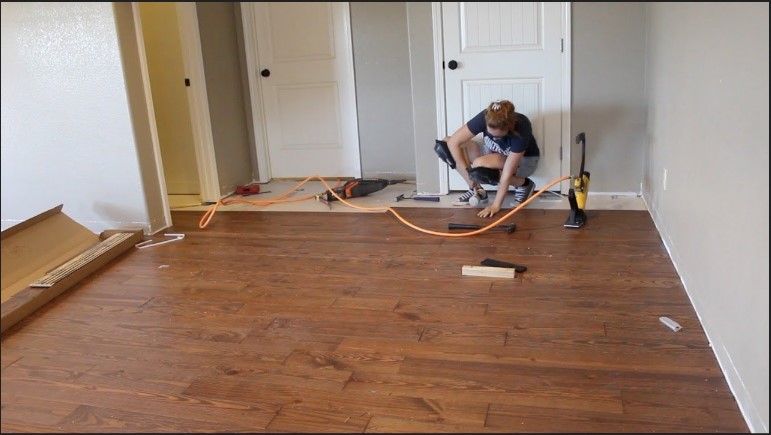The Professionals use techniques and skills for hardwood floor refinishing that can be acquired by anyone. So, Floor Refinishing can be accomplished by the homeowner in a very professional manner. Apply the following 8 methods and you should be on the road to less costly great looking hardwood floors in your home.
- The number one key to success is preparation. Proper Preparation is the most important key to achieving a nice looking floor. When sanding the old finish with a power belt sander, be sure and sand in the direction of the grain and remove all old stain completely over the entire floor. Start and stop marks will cause unsightly marks on your floor once the stain is applied, so avoid them like the plague. Be sure and feather sand areas that need it. This helps eliminate a splotchy appearance, by allowing a more even absorption of stain.
- With floor refinishing, thorough clean up is crucial. Proper clean up is also where a lot of people go wrong. Once you have sanded all the old stain and varnish from the wood, you have to remove even the tiniest particles of dust and debris from the floor and cracks. Vacuum the floor thoroughly and use a crevice tool to help lift dust and debris from cracks and crevices. After vacuuming thoroughly, use a tack cloth on all areas of the floor. The tack cloth will remove more debris that the vacuum cleaner can't remove. Many people make the mistake of forgoing this step. Don't forget this extremely important step. It will help you achieve a clean mirror smooth surface without the trash in your finish.
- Limit air flow in the room. Once you have cleaned the room you will need to stop dust from getting to your work area and to do that you have to stop the air flow. Stop air infiltration by closing all windows, doors, and heating and air vents. Keep all people and pets out of the room as they will track small particles of dust and hair onto the floor. Normal air flow should be resumed only after you have stained the wood, and the final coat of varnished applied to the floor has had time to dry to touch. Floor refinishing requires patients, so don’t rush this drying period or you will end up with trash in your floors new finish.
- Apply a wood conditioner before applying stain. Wood conditioners even out the absorption of stain in wood. This will give you a more even appearance with less of that splotchy look.
- Control the temperature in the room within the limits specified on the product labels. This will effect drying time of the products. Too hot or too cold can cause streaking, crawling and film formation problems.
- Stir the stain thoroughly before applying. If you have several gallons or quarts of stain, then box them all together so that your stain is uniform. Furthermore, remember that the solids in stains settle to the bottom of the can. It's real important to stir the stain very well making sure the solids are no longer settled to the bottom of the cans. Otherwise, your stain color will not be accurate. Floor refinishing is all about keeping particles off the floor and out of the finish you are applying.
- Pour your top coat finish through a strainer before using. Pouring the top coat finish through a cone strainer into a clean five gallon pail will remove any solid finish particles from the top coat finish product prior to application.
- Apply the top coat to a minimum of 3 mils thick. Two coats usually will achieve this and will also leave a more uniform sheen.

Comments
Post a Comment